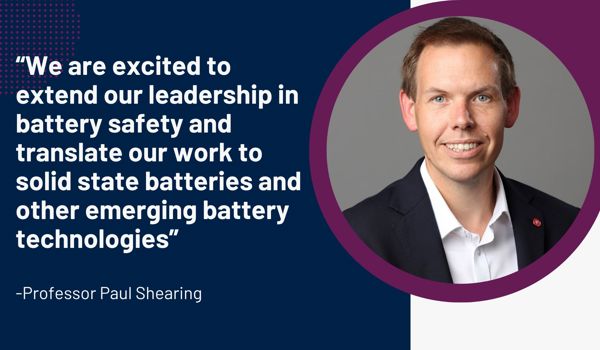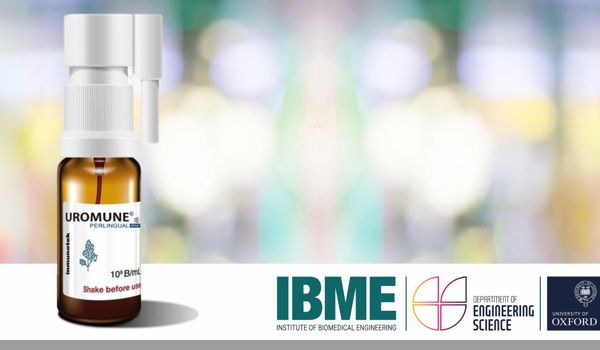Biography
Shaun’s research interests include computer models for the assessment of patient physiological status in a hospital environment and the design of clinical devices. At Oxford, Shaun’s research involves the development of methods for non-contact or non-intrusive estimation of vital signs (such as heart rate, respiratory rate, or blood pressure), combined with machine learning algorithms to predict patient outcomes.
Prior to joining the IBME in 2019, Shaun completed his bachelor’s and PhD in Mechanical Engineering at the University of Canterbury, New Zealand, along with two research fellowships at the University of Liège, Belgium. While at Canterbury, he worked on real-time clinical modelling and devices for mechanical ventilation, cardiovascular monitoring, and administration of insulin in the Intensive Care Unit (ICU).
Awards and Prizes
- Best Online Poster Presentation, Computers in Cardiology; 13-16 September 2020
- Young Author Award – Finalist, 10th IFAC symposium on Biological and Medical Systems; 3-5 September 2018 (to Ph.D. student Joel Balmer)
- Best Student Paper – Finalist, 10th International Joint Conference on Biomedical Engineering Systems and Technologies; 21-23 February 2017
Most Recent Publications
Features from the photoplethysmogram and the electrocardiogram for estimating changes in blood pressure.
Features from the photoplethysmogram and the electrocardiogram for estimating changes in blood pressure.
Contactless skin perfusion monitoring with video cameras: tracking pharmacological vasoconstriction and vasodilation using photoplethysmographic changes
Contactless skin perfusion monitoring with video cameras: tracking pharmacological vasoconstriction and vasodilation using photoplethysmographic changes
Diagnosing hypertension in primary care: the importance of night-time blood pressure assessment
Diagnosing hypertension in primary care: the importance of night-time blood pressure assessment
Predicting Isolated Nocturnal Hypertension Using Dawn and Dusk Home Blood Pressure Monitoring.
Predicting Isolated Nocturnal Hypertension Using Dawn and Dusk Home Blood Pressure Monitoring.
Classifying nocturnal blood pressure patterns using photoplethysmogram features.
Classifying nocturnal blood pressure patterns using photoplethysmogram features.
Research Interests
Currently, detecting the onset of illness relies on an individual realising they are feeling unwell and making an appointment with a general practitioner (GP). The GP, in turn, relies on self-reported information from their patient and spot measurements of vital signs to make a diagnosis. While this pipeline is tried and tested, there are a number of potential points of failure. Patients may choose not to visit a GP, are subjective in reporting their own information, and may lack perspective on what other symptoms or occurrences are relevant to a diagnosis. Additionally, the spot measurements of vital signs available to a GP (e.g. blood pressure from a cuff) present a mere snapshot of a person’s complex and ever changing physiology, and can be significantly affected by time of day, nervousness (the ‘white coat effect’), and a person’s daily routine. These factors can make accurate and timely diagnosis difficult, resulting in worsened outcomes for patients and an increased burden on the NHS.
Thus, as technology becomes increasingly portable, there is growing interest in continuous monitoring of vital signs and behaviour outside of traditional environments such as the GP clinic or hospital. Such continuous vital sign monitoring has several advantages. In particular, it allows access to highly personalised, long term vital-sign trends that contain diagnostic or prognostic information. For example, abnormal circadian (daily) vital sign patterns are known to be associated with an increased risk of cardiovascular events such as stroke and heart attacks as well as neurological conditions such as dementia, Parkinson’s disease, and Alzheimer’s. Access to this long-term, continuous information could allow a device to warn a patient when they should consider visiting a GP, as well as provide the GP with a more complete and relevant picture of what is ‘normal’ for the patient and how they have deviated from this ‘normality’.
The COVID-19 pandemic has placed additional emphasis on the advantages of telehealth and remote or non-contact monitoring, minimising exposure of GPs and clinical staff to potentially contagious patients. A further potential advantage of continuous monitoring of vital signs outside of the clinic is avoiding unnecessary visits or visits by patients with specific symptoms, as well as allowing for a more comprehensive telehealth approach to be employed by GPs.
My research into continuous and remote monitoring of vital signs involves the following components, including, but not limited to, hardware development, software development, and data science.
Current Projects
Software for video-based vital sign monitoring:
- Development of a smartphone app (iOS) for non-contact, real-time estimation of vital signs such as heart rate and respiratory rate using the inbuilt phone camera, as well as the simultaneous display and recording of physiological data from network devices such as pulse oximeters and thermal cameras. This app is being developed using a combination of Swift, Objective-C, C++, and C.
Wearables for long-term, continuous vital sign monitoring:
- Design of wearable sensors incorporating electrocardiogram (ECG) and photoplethysmogram (PPG) sensors, including developing C/C++ code for real-time use and signal processing.
Prognostic use of long-term (daily/circadian) rhythms:
- Investigation into the presence and diagnostic/prognostic significance of circadian patterns in vital signs using hospital databases such as MIMIC-III, eICU-CRD, and PICRAM, involving the statistical analysis of large amounts of patient data.
Research Groups
Related Academics
Most Recent Publications
Features from the photoplethysmogram and the electrocardiogram for estimating changes in blood pressure.
Features from the photoplethysmogram and the electrocardiogram for estimating changes in blood pressure.
Contactless skin perfusion monitoring with video cameras: tracking pharmacological vasoconstriction and vasodilation using photoplethysmographic changes
Contactless skin perfusion monitoring with video cameras: tracking pharmacological vasoconstriction and vasodilation using photoplethysmographic changes
Diagnosing hypertension in primary care: the importance of night-time blood pressure assessment
Diagnosing hypertension in primary care: the importance of night-time blood pressure assessment
Predicting Isolated Nocturnal Hypertension Using Dawn and Dusk Home Blood Pressure Monitoring.
Predicting Isolated Nocturnal Hypertension Using Dawn and Dusk Home Blood Pressure Monitoring.
Classifying nocturnal blood pressure patterns using photoplethysmogram features.
Classifying nocturnal blood pressure patterns using photoplethysmogram features.
Most Recent Publications
Features from the photoplethysmogram and the electrocardiogram for estimating changes in blood pressure.
Features from the photoplethysmogram and the electrocardiogram for estimating changes in blood pressure.
Contactless skin perfusion monitoring with video cameras: tracking pharmacological vasoconstriction and vasodilation using photoplethysmographic changes
Contactless skin perfusion monitoring with video cameras: tracking pharmacological vasoconstriction and vasodilation using photoplethysmographic changes
Diagnosing hypertension in primary care: the importance of night-time blood pressure assessment
Diagnosing hypertension in primary care: the importance of night-time blood pressure assessment
Predicting Isolated Nocturnal Hypertension Using Dawn and Dusk Home Blood Pressure Monitoring.
Predicting Isolated Nocturnal Hypertension Using Dawn and Dusk Home Blood Pressure Monitoring.
Classifying nocturnal blood pressure patterns using photoplethysmogram features.
Classifying nocturnal blood pressure patterns using photoplethysmogram features.





